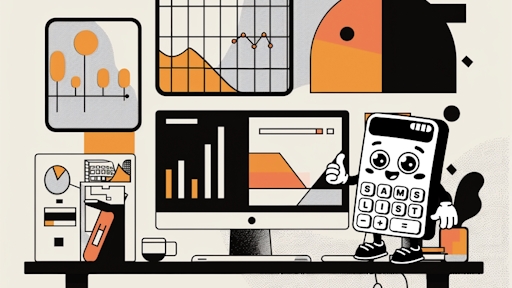ThePaycheck Protection Program(PPP) was a federal loan program established in 2020 under the CARES Act to help small businesses maintain payroll during COVID-19 disruptions. It offered forgivable loans of up to $10 million for payroll, rent, and utilities if specific criteria were met. The program officially ended on May 31, 2021, but its lessons still shape small business financing today.
To make smarter financial decisions for your business, connect with a qualified advisor onSam’s List.
Who AreQualified for a PPP Loan?
The PPP loan was created under theCARES Actto provide financial assistance to small businesses impacted by the pandemic. Generally, eligible entities included:
- Small businesses with500 or fewer employees
- Sole proprietors, independent contractors, and self-employed individuals
- Nonprofit organizations and veterans’ groups
- Tribal businesses and certain hospitality or food service companies with multiple locations
Businesses needed to demonstrate that the loan was necessary to support ongoing operations due to pandemic-related disruptions.
So,how does a PPP loan work? In essence, the loan was meant to cover payroll expenses and specific operating costs. If a business used the funds appropriately—primarily for payroll, rent, mortgage interest, and utilities—it could qualify for full or partial loan forgiveness.
Who Is Not Eligible for a PPP Loan?
While the program was designed to help as many struggling businesses as possible, not everyone qualified. Understandingwho is not eligible for a PPP loan is crucial, especially as businesses prepare for future financial relief programs.
Entities that did not qualify included:
- Businesses engaged in illegal activities under federal law
- Household employers, such as those hiring nannies or housekeepers
- Any company with owners convicted of certain financial crimes within the past five years
- Publicly traded corporations or large firms with access to substantial capital
- Businesses that received duplicate PPP loans from multiple lenders
- Companies that could not verify the need for the funds or provide documentation
Knowing who is not eligible for a PPP loan helps clarify the government’s intent—to assist genuinely struggling small businesses, not corporations with ample financial resources.
The Terms and Conditions of PPP Loans During the Pandemic
At its core, the PPP loan was aforgivable loan—a lifeline for small businesses during an economic shutdown. But how does a PPP loan workin terms of repayment and forgiveness?
Here’s how the terms were structured:
- Interest rate:1% fixed
- Loan term:2 years (later extended to 5 years for loans made after June 5, 2020)
- Use of funds:At least60%of the amount had to go toward payroll costs; the remaining 40% could be used for rent, utilities, or mortgage interest
- Forgiveness:Businesses could apply for forgiveness if they maintained employee headcount and compensation levels
In short, the PPP loan functioned as both astimulus measure and a safeguardfor American workers, helping millions keep their jobs during a turbulent period.
Applying for a PPP Loan: Process and Challenges
During the pandemic, the PPP application process was managed throughapproved lenders, including banks, credit unions, and online platforms. Applicants had to submit documentation showing average monthly payroll expenses, business tax records, and proof of need.
Understandinghow does a PPP loan workalso meant knowing how to apply properly:
- Determine eligibility.Confirm you meet the SBA size standards and haven’t received another PPP loan.
- Calculate loan amount.Most applicants qualified for up to2.5 times their average monthly payroll, capped at $10 million.
- Submit required documentation.Include payroll reports, IRS filings, and utility or rent statements.
- Wait for approval and funding.Many businesses received funds within a few weeks, depending on lender efficiency.
However, because of high demand and evolving rules, many small business owners found the process confusing and frustrating. Lessons from this experience highlight the importance ofmaintaining clear financial recordsand having a strong relationship with your lender.
PPP Loan Fraud: What Happened and What We Learned
While the PPP loan program helped millions, it also saw widespread misuse. Reports revealed that some individuals and companies falsified payroll data, created fake businesses, or used funds for personal expenses.
This prompted federal investigations and criminal charges in thousands of cases. ThePPP loan fraudwave underscored the need for stronger verification systems and transparency in emergency lending programs.
Learning from this, businesses must understand compliance requirements and maintain documentation when applying for any government-backed financial assistance. Even honest mistakes in loan applications can have serious legal or financial consequences.
Lessons and Tips for Business Owners After the COVID-19 Crisis
While the PPP loan program has ended, its lessons remain valuable for entrepreneurs and small business owners. Here are some takeaways and actionable tips:
- Build an emergency fund.The pandemic showed how quickly business operations can be disrupted. A reserve of 3–6 months’ expenses can provide a crucial buffer.
- Keep organized financial records.Up-to-date bookkeeping makes it easier to apply for aid or loans in times of crisis.
- Work with trusted advisors.Having a reliable accountant or financial consultant ensures your business remains compliant and prepared for future funding opportunities.
- Diversify revenue streams.Relying on a single source of income makes your business more vulnerable during economic downturns.
- Stay informed.Government policies and relief programs can change rapidly. Keeping up to date with verified sources—like the SBA or trusted platforms such asSam's List—can give you an edge.
The Bottom Line
The PPP loan program was a defining feature of the pandemic’s economic response. For many, it was the difference between survival and closure. Understandinghow does a PPP loan work, the rules around eligibility, and who is not eligible for a PPP loanprovides valuable insight for navigating future financial aid programs.
Whether you’re planning ahead for the next business challenge or simply want to strengthen your financial foundation, the lessons from the PPP era are clear: transparency, preparation, and adaptability are key.
If you’re a business owner looking to connect with trusted financial advisors or consultants, exploreSam's List—a platform built to help youfind verified professionalswho can provide qualified guidance to help you make informed financial decisions.
Disclosure:This content is for informational purposes only and should not be construed as financial, investment, or legal advice. PPP loan information is based on publicly available data from the SBA and U.S. Treasury. If you choose to engage an advisor or consultant through SamsList.co, please verify their registration status with the SEC or your state securities regulator.
FAQs
1. What is a PPP loan?
A PPP loan (Paycheck Protection Program loan) was a federal relief initiative created under theCARES Actto help small businesses cover payroll and essential expenses during the COVID-19 pandemic. It provided forgivable loans to help employers retain staff and stay operational during shutdowns.
2. What did PPP stand for?
PPP stands for Paycheck Protection Program — a U.S. government program managed by theSmall Business Administration(SBA). It aimed to support small businesses affected by the pandemic through easily accessible, low-interest, and forgivable loans.
3. Does PPP need to be paid back?
Not necessarily. PPP loans were designed to be forgivable if borrowers used the funds primarily for payroll (at least 60%) and other approved expenses like rent, mortgage interest, and utilities. If those conditions weren’t met, the remaining balance would need to be repaid at a 1% fixed interest rate.
4. What is PPP used for?
PPP funds were meant to cover key operating costs, including:
Employee payroll and benefits
Rent and utilities
Mortgage interest or lease payments
Certain supplier costs and operating expenses
The goal was to help small businesses maintain employment and financial stability during the pandemic.
You Might Also Like
- What Kind of Financial Help Do You Actually Need? (Founder $500K–$10M Guide)
- Outsourced Accounting: Streamlining Financial Operations
- What is Outsourced Accounting and Why Your Business Needs It
- How to Pay Yourself as a Business Owner LLC (U.S. Guide)
Accountants on Sam's List
- Purewater Financial- Full-suite financial services company specializing in tax planning and preparation, accounting/bookkeeping, tax strategy, and cryptocurrency/web3 strategy.
- CPA on Fire- CPA on Fire is a concierge-level financial advisory firm led by former Big Four accountants, delivering proactive, forward-thinking strategies that go far beyond traditional accounting to support the growth and success of ambitious business owners & founders.
- Ecom CPA- ECOM CPA is the trusted guide to financial clarity and growth for 7-9 figure eCommerce sellers
- Nimbl- We provide freedom for business owners as their fractional accounting, finance, and tax team.
- Anchor- With over a decade of experience, we specialize in the unique accounting needs of tech startups, including accounting, tax, Fractional CFO and HR.







